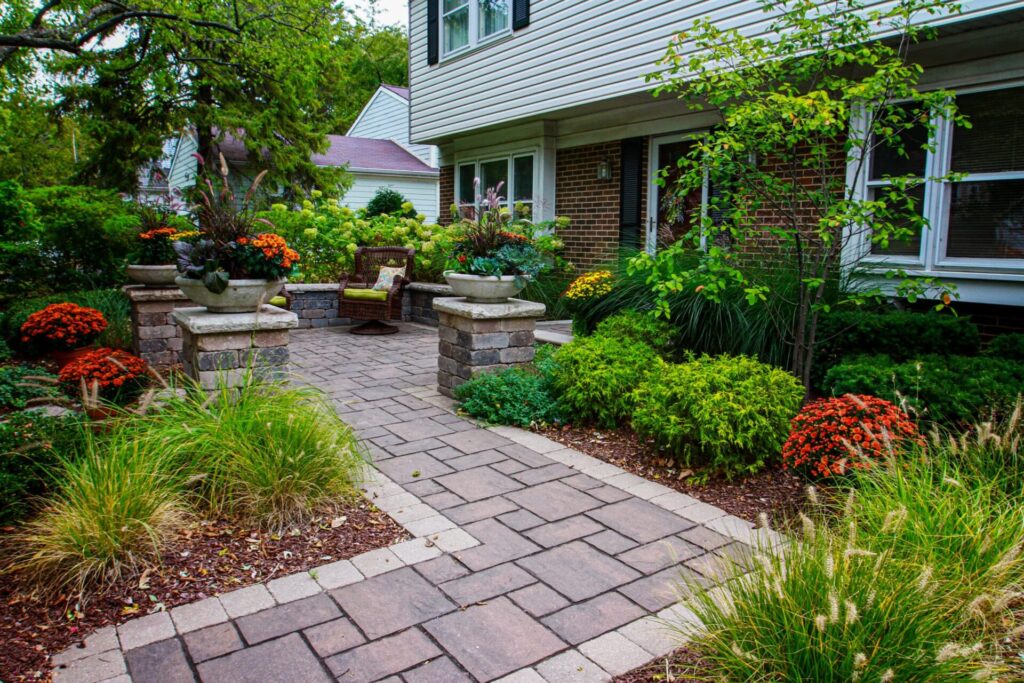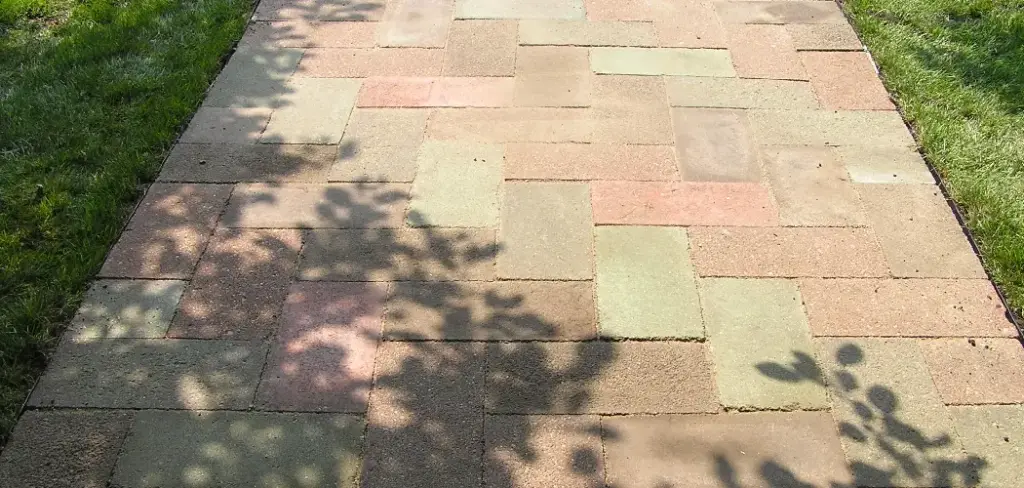Austin, Texas, is known for its hot summers, unpredictable rainfall, and occasional freeze-thaw cycles in the winter. These weather extremes can take a toll on outdoor features like paver patios, causing them to wear out faster than expected. To keep your paver patio looking beautiful and functional for years to come, it’s crucial to know how to maintain it properly in Austin’s unique climate.
In this article, we’ll share practical tips and maintenance practices to ensure your paver patio remains a durable and attractive feature in your backyard for years. From cleaning to sealing, we’ve got all the expert advice you need to protect your patio from Austin’s challenging weather conditions.


One of the most important aspects of maintaining a paver patio is regular cleaning. Over time, dirt, debris, algae, and moss can accumulate between the pavers, especially after heavy rainfall, which is common in Austin’s climate. Regular cleaning helps prevent the growth of weeds and keeps your patio looking fresh.
How to Clean Your Paver Patio:
Sweep away debris regularly with a broom or leaf blower.
Use a pressure washer to clean the surface of the pavers, ensuring you don’t damage them with excessive force. Keep the pressure below 2,000 psi to avoid loosening the joints.
For stubborn stains, use a mild detergent mixed with water and scrub the affected area with a soft brush.
Cleaning your paver patio at least once every season is recommended to maintain its appearance and longevity.
Austin’s high temperatures and humidity levels can cause pavers to fade or become discolored over time. Sealing your paver patio is a highly effective way to protect it from weather damage. Sealing helps lock in the pavers’ natural color, prevents stains, and protects the surface from water infiltration.
When to Seal Your Paver Patio:
After installation or cleaning, it’s ideal to apply a sealer to your pavers to offer long-lasting protection.
Reapply the sealer every 2-3 years, depending on the amount of wear your patio experiences and the climate conditions in Austin.
There are two main types of sealers: glossy and matte. Choose the one that best suits your aesthetic preferences.
Paver patios are designed with small gaps between the pavers that allow for water drainage and flexibility. However, these gaps can also be a spot for weeds to grow and for sand to erode due to the moisture in Austin’s climate. If the sand or joint filler washes away over time, it can cause the pavers to shift, leading to uneven surfaces.
How to Repair Gaps and Joints:
Check the joints between your pavers regularly, especially after rain or heavy wind.
If the sand has been washed out, re-sand the joints using polymeric sand, which helps prevent weed growth and erosion.
Compact the sand into the joints and then use a broom to remove any excess. This will help ensure the joints stay intact, preventing movement and shifting.
By maintaining the integrity of your paver joints, you can avoid costly repairs and keep your patio in top condition.
While Austin rarely experiences freezing temperatures, occasional cold spells can still occur during the winter months. If water seeps into the gaps between your pavers and freezes, it can cause the pavers to shift or crack. To minimize freeze-thaw damage, it’s important to ensure proper drainage and prevent water from accumulating on your patio surface.
How to Protect Against Freeze-Thaw Damage:
Make sure your patio is installed with proper drainage so water doesn’t pool in any areas.
Seal the pavers to reduce water infiltration and protect the surface.
Remove excess debris and leaves during the fall to prevent water from getting trapped under them.
By taking these preventive measures, you can protect your paver patio from freeze-thaw cycles during colder months.
Austin’s humid climate makes it the perfect breeding ground for moss and algae on outdoor surfaces like patios. These can make your pavers slippery, unsightly, and potentially unsafe.
How to Address Moss and Algae Growth:
Use a mixture of vinegar and water (1:1 ratio) to kill and remove moss and algae. Apply the solution to the affected area, allow it to sit for a few minutes, and then scrub with a brush.
Regularly clean your paver patio to prevent the buildup of organic matter that promotes moss and algae growth.
Consider using a moss-resistant treatment to deter future growth, especially in shaded areas.
Over time, paver patios can shift, crack, or settle due to a variety of factors, including shifting soil, heavy traffic, or poor installation. If you notice any unevenness or damage, it’s important to address it promptly.
How to Maintain Structural Integrity:
Inspect your patio regularly for any signs of shifting or settling. If pavers become uneven, you may need to lift and re-level them.
If a paver becomes cracked, replace it to prevent further damage to the surrounding area.
Taking care of small issues before they become larger problems will save you money in the long run and help maintain the functionality and aesthetic appeal of your patio.
Austin’s scorching summers can cause pavers to expand and contract. While most paver patios are designed to withstand temperature fluctuations, constant exposure to high heat can cause minor damage over time.
How to Protect Pavers in High Temperatures:
Avoid placing large, heavy objects on your patio, as they can leave indents or cause the pavers to shift under extreme heat.
Consider installing shade structures, such as umbrellas or pergolas, to protect your patio from direct sun exposure during the hottest parts of the day.
Conclusion
Maintaining your paver patio in Austin’s climate requires a bit of care and attention, but the effort will pay off in the form of a beautiful, durable outdoor space that lasts for years. Regular cleaning, sealing, joint maintenance, and protection from the elements are all key to ensuring your patio stays in top shape. By following these simple maintenance tips, you can protect your investment and enjoy a stunning patio all year long.



